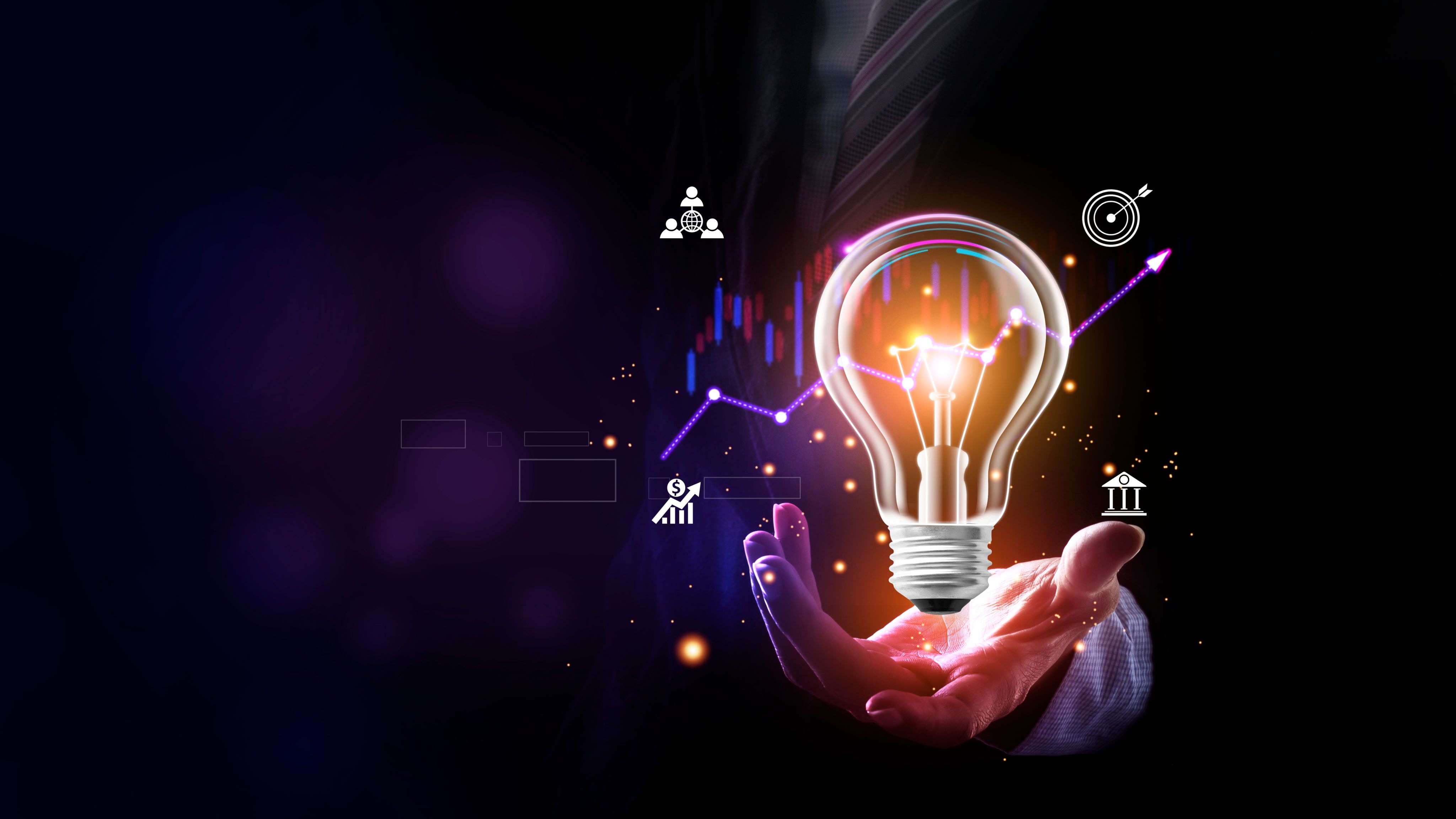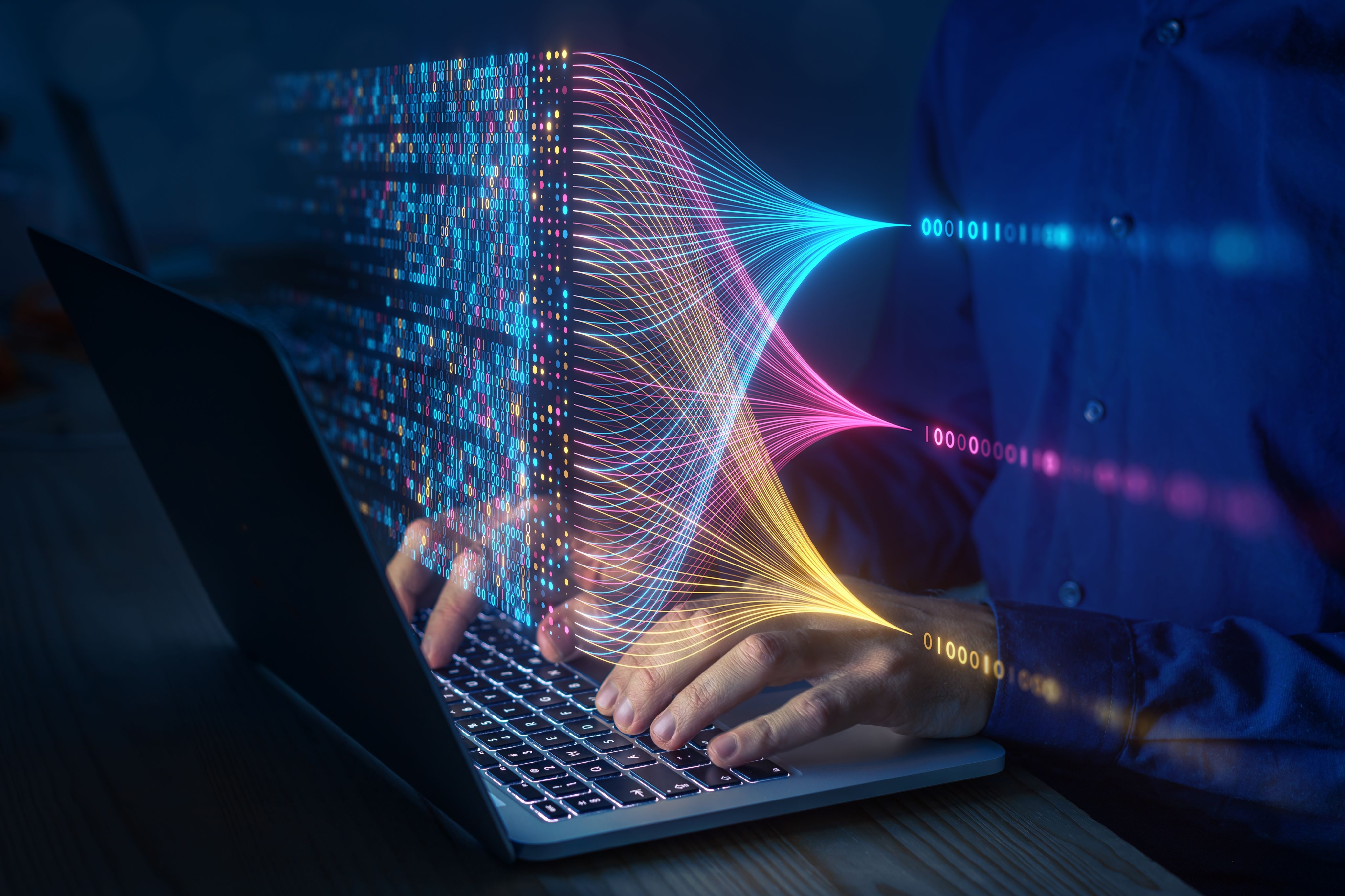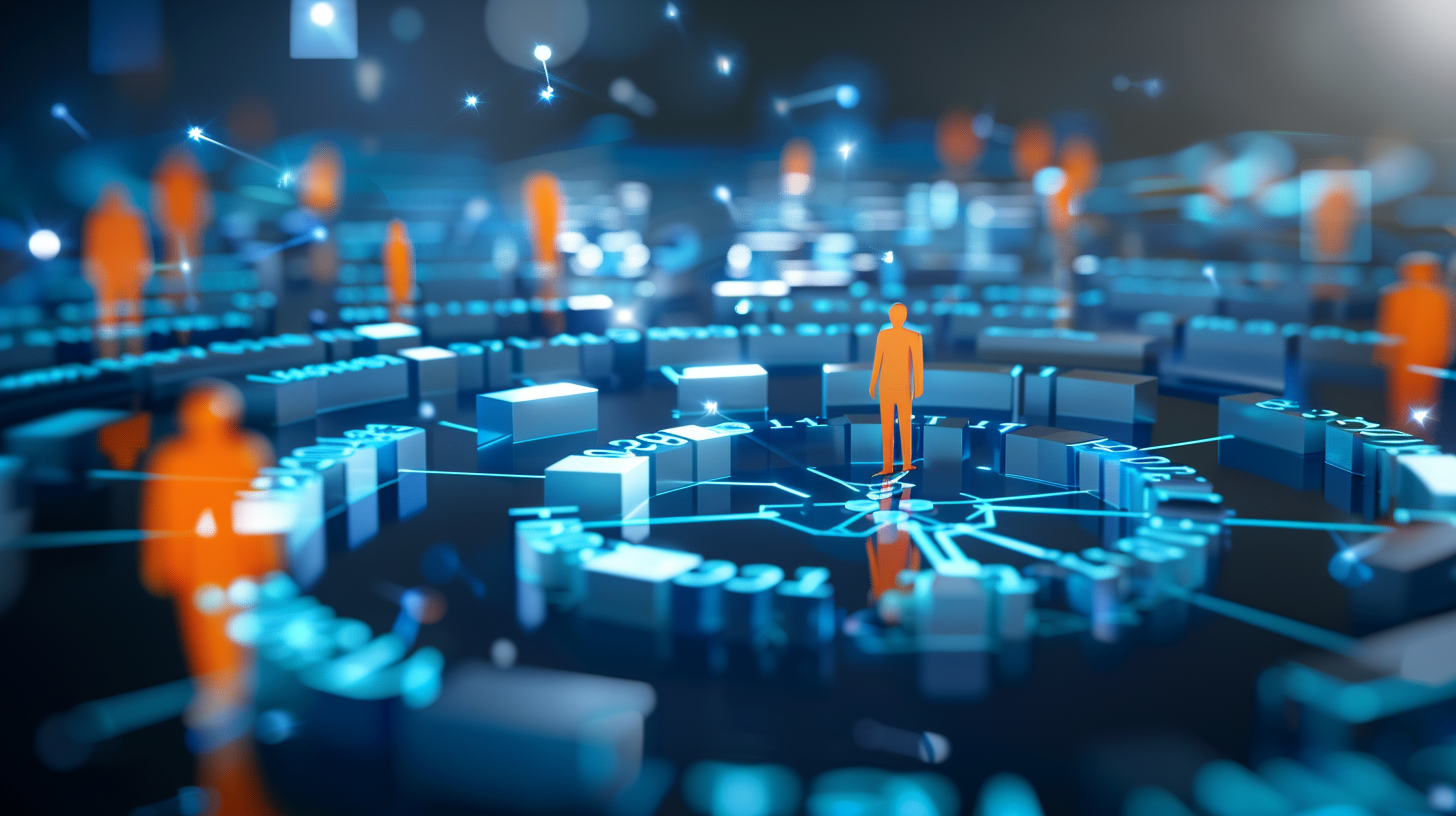Talent Technology Translator
Do you speak talent technology?
The talent industry is facing a changing landscape. To truly make the most of it, you need to stay ahead. The AMS Talent Technology Translator is designed to help you explore technology in talent by learning about key terms and tools, and how they can benefit your business.
An effective talent strategy depends on using the right technology, at the right time, for the right reasons. But as the world has moved so quickly, are you sure you really know the basics?
Our translator helps you to ‘talk tech’ fluently – meaning you can make informed decisions, faster.

Learn the tech terms in talent today
AI-enabled chatbots and virtual assistants
Adaptive learning platforms
Adaptive learning platforms are seen across all levels of education. They are tools that can personalize or customize the learning experience for every individual student. Adaptive learning platforms use data and algorithms to create specific educational processes based on the strengths and weaknesses of the user.
What does it mean for TA?
Adaptive learning platforms are very relevant to TA, as they can be used to personalize onboarding, training modules, feedback sessions and skills analysis platforms for both candidates and internal team members. For example, companies may choose to use adaptive learning platforms for employee engagement as part of an internal mobility strategy, to assess skills gaps and capabilities that already exist in the organization.

Advanced connectivity
Advanced connectivity refers to the use of fast and streamlined communication technologies that connect networks and tools with more efficiency. It includes smart devices, high-speed internet, cloud computing, AI and other modern applications.
What does it mean for TA?
In the context of TA, advanced connectivity means using faster and more efficient technology and communication methods to improve the process of finding, attracting and onboarding the right new hires. It can positively impact the hiring process in many ways, such as: conducting remote hiring interviews, finding more global talent, gathering data from various sources for decision making, and collaborative or video hiring and training. Advanced connectivity allows the HR industry to integrate across contemporary technologies.

AI-enabled chatbots and virtual assistants
Chatbots and virtual assistants are conversational AI tools that engage users to complete tasks more succinctly and efficiently. Both are components of a digital experience, but while chatbots are often used to perform a specific and pre-determined set of tasks, virtual assistants are multi-functional and model a human-like interaction.
What does it mean for TA?
Chatbots and virtual assistants cannot replace the ‘human touch’ of typical recruitment, but they do provide significant value-add. These tools help to streamline the candidate experience and create consistency in the process. Some other benefits of chatbots and virtual assistants include reduced time-to-hire due to faster, more efficient interactions and a simplified pre-qualification process, increased personalization, multi-language support opportunities, and increased candidate insight generation. However, the implementation of these tools can be complex and requires a robust overall technology strategy to achieve.

Applicant tracking system (ATS)
An applicant tracking system is a piece of software or platform that helps streamline and automate the recruitment and hiring process.
What does it mean for TA?
Applicant tracking systems help organize candidates for recruitment purposes. They can collect candidate data, group potential hires by their experience or map out their specific skills, then help choose the best candidates. They give TA managers a complete oversight on the entire lifecycle of job vacancy.

Artificial Intelligence (AI)
Artificial Intelligence, more commonly referred to as ‘AI’, is the ability of a machine to perform human-like capabilities.
What does it mean for TA?
AI is changing the face of hiring. It has the potential to change every aspect of the recruitment process, from allowing TA teams to spend more time engaging with candidates as manual day-to-day tasks become automated, to significantly expanding and diversifying talent pools. Overall, it means recruiters are becoming more like Talent Agents, rather than Talent Scouts.

Blockchain technology
Blockchain technology refers to systems that can aggregate transaction records. Its central benefits are increasing security and transparency for digital ledgers. Types of blockchain technology include smart contracts, cryptocurrency, supply chain management, cross-border payments, and notary services.
What does it mean for TA?
As it evolves, blockchain technology has the potential to transform the TA space. As companies and governments address issues such as data privacy, there will be more and more doors opened to its use. Some – but not all – of the opportunities presented by blockchain technology include improved HR processes and administrative overhead, improved candidate data security, and faster, more efficient reference checks.

Cyber resilience
Cyber resilience is the ability of an organization to be prepared for and manage potential cyberattacks.
What does it mean for TA?
As the technology space continues to evolve, the potential risk of cyberattacks increases. Having effective cyber resilience reduces the impact of an attack and ensures the organization can continue to operate effectively. Businesses should be hyper vigilant when implementing any new tools to their tech stack and ensure they are as safe as possible, since they will hold sensitive candidate information. To support with this, talent teams should begin to consider hiring internally for specialist roles that can mitigate cyber threats, such as Ethical Hackers or Risk Managers.

Data lakes
A data lake is a storage facility that allows companies to store huge banks of data. The beauty of data lakes is their flexibility, meaning data can be stored without first being structured. This saves time and money and allows different types of analytics and tools to be applied to help make better decisions.
What does it mean for TA?
Managing talent pools efficiently is a key consideration for TA professionals, and data lakes offer a simple and flexible way to do this. Integrating different kinds of information to create more informed candidate profiles will enable faster decision making. There is often a pre-conception that storing such vast quantities of data can de-personalize the hiring process, but with improvements in analysis and scalability, data lakes can help TA professionals to understand historic inputs. This in turn serves to streamline processes and develop job descriptions that more closely match candidate interests.

Edge computing
Edge computing refers to technology’s ability to send information to a local server rather than a distant setup. It enables information processing to occur much more quickly, since the process is not stalled by internet traffic, and allows for more privacy and security.
What does it mean for TA?
From a hiring and sourcing perspective, edge computing is a new technology skill that will be highly valuable in the modern work world, and demand for talent with this skillset is only set to increase. Internally, remote working policies may also shift as teams become more decentralized due to the faster and more efficient nature of edge computing. Edge computing may also create new privacy and data security considerations for HR teams.

Gamification
Gamification is the application of game-like activities to the digital user experience to motivate and engage users. This approach can help to make a company’s brand memorable by improving user experience. Gamification can also be used as a mechanism to increase the rate of a platform’s sign-ups, applications, logins, and more.
What does it mean for TA?
Skills testing and assessment. Rewards and recognition. Quizzes, simulations and challenges. These are the types of gamified, interactive digital elements that can be incorporated into the hiring process. Gamification can heighten and improve the candidate user experience, as well as collect valuable data and insights on your candidates and new hires. However, it is important to note that any gaming conventions adopted should always align with an organization’s values to ensure continuity with the company culture.

Generative AI
This type of AI uses deep learning and neural networks, allowing users to ask questions so the AI can provide solutions. Unlike traditional AI, which can only analyse data and tell you what it sees, Generative AI can use the same data and create something new. A well-known usage of Generative AI is Chat GPT, but a well-trained AI tool can also be used to analyze data or create Virtual Assistance interactions.
What does it mean for TA?
Generative AI is streamlining processes for hiring qualified candidates. Just like robots are connecting better with people through natural language, Generative AI is helping technology to communicate better with talent – providing a more personalized and engaging experience in job ads, emails, and more. It means talent professionals can do what they do best, removing administrative burden and repetitive tasks to allow them to focus on the nuances of fitting the right candidate to the right role.

Immersive reality
Immersive reality is a technology that surrounds the user with a simulated or synthetic environment. Types of immersive reality technologies include virtual reality, mixed reality, and augmented and 3D content. Users engaging with immersive reality may experience sensory effects such as surround sound and panoramic displays.
What does it mean for TA?
The future of talent acquisition may see forms of immersive reality play a role. Examples of this may include virtual job fairs, simulated training or onboarding, engaging and collaborative hiring processes, interactive tests and skills assessments. Immersive reality is in a transformative stage, but for talent acquisition, it could open doors to creative recruitment approaches and super-charge the candidate experience.

Large language models
Large language models are a subset of AI. They are deep learning algorithms that can understand and predict human language. At the basis of these models is the ability to generate a wide range of language-related outcomes, often in the form of chatbots, text summaries, sentiment analysis, or text creation or completion.
What does it mean for TA?
Large language models can benefit the TA industry in several areas. Some of the most common ways they are used in the space right now are creating efficiencies around resume screening, candidate skills matching and interview scheduling, and supporting an enhanced candidate experience via fast and user-friendly chatbots.

Machine learning
Machine learning is a subfield of Artificial Intelligence (AI) that enables computers to learn without being programmed, but rather through experience. Machine learning can recognize patterns, generate predictions, and solve problems based on data.
What does it mean for TA?
AI and machine learning are often used together in talent acquisition. While AI can help with simplifying HR tasks and automating administrative processes, machine learning can support data-driven programs like resume screening or candidate matching. The tools work in tandem to create solutions for talent teams.

Natural language processing
Natural language processing (NLP) is an aspect of Artificial Intelligence that uses various techniques – such as machine learning and linguistic rules – to teach computers how to process human language. An example of NLP is speech recognition, which sees AI technology convert spoken language into written text.
What does it mean for TA?
NLP has the potential to create never before seen efficiencies in the TA space, particularly for what are currently manual administration tasks. With the ability to monitor and analyze human language, NLP can power faster, automated resume screening, chatbots, candidate matching and sentiment analysis – to name just a few.

Phygital convergence
Phygital convergence is the merging of the physical and digital experiences. In-store shopping experiences are examples of this concept, which sees technology used to create interactive displays or augmented reality experiences. Businesses can leverage these experiences to integrate online and offline marketing efforts.
What does it mean for TA?
As phygital convergence evolves in the talent tech space, the application and hiring process will become more modernized. Digital platforms, virtual hiring, video conferencing, chatbots and more will evolve to bridge the gap between real life and the digital space. Technology will become more complementary to the candidate experience

Predictive analytics
Predictive analytics involves the utilization of historical and non-historical data, machine learning and algorithms to extract future insights. This process is helpful for planning and can significantly mitigate risk.
What does it mean for TA?
Predictive analytics helps HR and TA professionals identify in-depth and up-to-date insights on the talent market. By analyzing historical data on successful hires, organizations can focus their recruitment efforts on the platforms, channels and regions that yield the best candidate results. Predictive analytics can also be used in a variety of ways throughout the hiring process – from retention predictions, to skills gap analysis. As data sources grow, predictive analytics is becoming an increasingly important tool in hiring strategies.

Proprietary matching technology
This is technology developed and used in-house by an organization to match candidates to specific criteria or roles, making sourcing processes more efficient.
What does it mean for TA?
Proprietary matching technology allows talent teams to leverage data and insights on everything from niche skills to specific location and experience, to find the right candidates for their open roles. It allows organizations to speed up and fine-tune the hiring process by finding the best candidate fit, faster.

Quantum computing
Quantum computing uses quantum mechanics to solve complex problems that are beyond the capabilities of a typical computer. Researchers and organizations are developing and refining hardware and algorithms for quantum computing, and as it advances, it is expected to have an extraordinary impact on all technology globally.
What does it mean for TA?
Quantum computing is the next leap in talent technology. Still in its infancy, this new technology will impact things like security, data analysis, optimization, bias, and the further evolution of AI. While the potential of quantum computing in TA is in its discovery phase, the possibilities of how this may be used include: the mass analysis of complex data to identify best-fit candidates, speeding up complex training processes, re-designing onboarding processes, and providing unprecedented insights for talent sourcing.

Responsible AI
Responsible AI is about using this new technology ethically and effectively. It means leveraging AI in a way that is aligned with current laws and regulations. It also acknowledges that AI should act in alignment with an organization’s policies and values.
What does it mean for TA?
With new AI regulation on the horizon, companies need to understand how to leverage AI responsibly and ethically. Abiding by changing AI laws is becoming increasingly important in the TA space, and companies that don’t take this seriously will put themselves at risk. It is vital to follow these changing laws and set up your organization for safe AI use. Understanding what, where and how AI is decision-making and functioning within your tech stack is integral to business values and success.

Sustainable technology
Sustainable technology, or ‘green’ technology, refers to the evolving use of technology that has a reduced environmental impact. Sustainable technology aims to limit its effects on the next generations through innovative solutions such as renewable energies, recycling, waste and water management, and other clean efficiencies.
What does it mean for TA?
Sustainable technology will have implications for most industries, and TA and HR are no different. In these spaces, green tech will be on the forefront of skills, with organization’s increasingly looking to fill roles in renewable energy, sustainable design and other environmental specialities. TA strategies will also have to consider a variety of disciplines, as the professional expertise needed in these areas can span a diverse range of backgrounds. Candidates’ commitment to corporate social responsibility is also becoming more important when crafting an Employer Value Proposition (EVP), as many young people are eager to work for companies that genuinely prioritize sustainability – both in their tech approach and more broadly.

Talent intelligence
Talent intelligence is the process of safely and securely gathering, analyzing, and using information about individuals to help make more informed decisions on hiring and retaining talent.
What does it mean for TA?
Talent intelligence, when used effectively, can provide organizations with a significant competitive advantage. By leveraging in-depth data and analytics, it can inform many aspects of talent acquisition, from ensuring diversity in a specific talent pool, to overall market research. All this helps reduce time-to-hire and drop-out rates, and make better hiring decisions.

Talent tech strategy
This is a strategic, long-term plan for how to leverage technology in sourcing, hiring and retaining top talent, as well as plan ahead for future talent gaps.
What does it mean for TA?
Having a robust talent tech strategy in place ensures organizations can implement the right technology for their specific business needs and challenges. This allows companies to get a maximum return on investment for new talent tech tools and avoid unnecessary cost.

Tech-enabled RPO
Recruitment Process Outsourcing (RPO) is the outsourcing of a company’s recruitment process to a dedicated third-party organization. RPO providers like AMS specialize in strategy and processes for talent acquisition. They have access to, and in-depth knowledge of, the latest talent technology tools on the market. Outsourcing your recruitment processes can help to build a talent acquisition model that grows and adjusts to your business’ evolving needs.
What does it mean for TA?
Leveraging RPO operating system technology can help improve hiring and cost effectiveness. A company might be looking to outsource just one aspect of their recruitment function, or for an external vendor to manage the entire end-to-end process. RPO partners can support with everything from candidate sourcing, screening and interviewing, to specialist advisory services in diversity, equity and inclusion (DEI), or technology implementations. They have access to advanced tools and technologies that can help to seamlessly source and attract candidates. RPO providers can also help organizations to operate their recruitment and technology processes legally and within compliance frameworks.

Tech-enabled skills-based hiring
Skills-based hiring is an approach based on matching the skills required to perform a particular job with the right person, rather than focussing solely on a candidate’s education or past work experience.
What does it mean for TA?
Skills-based hiring can significantly widen the talent pool for a particular role, shining a light on candidates who may have otherwise been overlooked after being siloed into a specific job type. This allows businesses to increase their time-to-hire after spending less time sourcing the right person for the role. Technology can play a big part in this process, as many tools in the market will allow businesses to gain oversight of the skills that currently exist within the business, as well as areas where there may be skills gaps.

Tech stack
A tech stack is a group of tools, programming languages and/or frameworks that are used to build and run software applications. A successful tech stack sees a business’ various technologies work together to deliver a solution.
What does it mean for TA?
A tech stack is the suite of technologies that helps a company to hire at scale. Choosing the right tools for your tech stack, and selecting the best people and processes to manage and support new technology, is crucial for successfully hitting your talent objectives.

User experience
User experience, more commonly referred to as ‘UX’, is the journey a person experiences while interacting with a product, service, or system.
What does it mean for TA?
In recruitment terms, UX is the experience a recruiter, employee, candidate or hiring manger has during the sourcing, interviewing and/or onboarding period. For candidates, a positive user experience likely involves a speedy and communicative process, enhanced by the inclusion of mobile-optimised technology platforms. For recruiters, technology can also be a significant aid to user experience, reducing the burden of admin-heavy tasks such as interview scheduling.






























